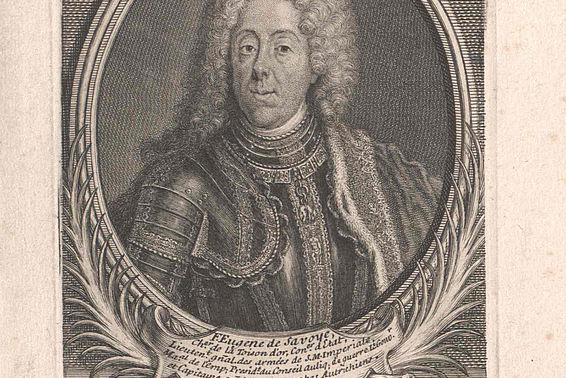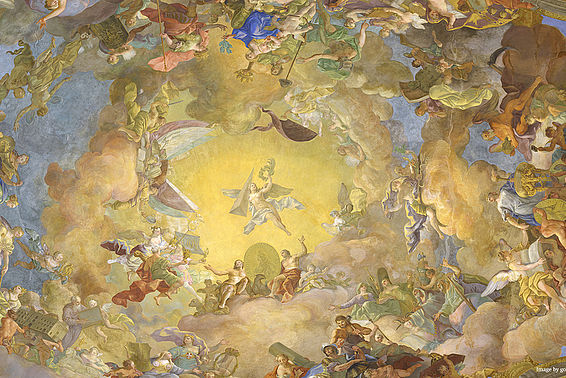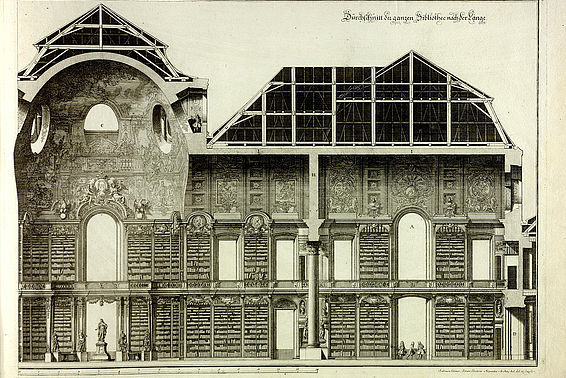1723: The Baroque World in the State Hall
A decisive turning point in the history of the imperial library occurred in the eighteenth century. In 1722, Emperor Charles VI initiated the construction of a library in today’s Josefsplatz. After the end of the War of the Spanish Succession and the Turkish Wars he realised a building project that had already been planned by his father, Leopold I. Based on plans by Johann Bernhard Fischer von Erlach, the library was built by the latter’s son, Joseph Emanuel Fischer von Erlach, between 1723 and 1726. The interior and fresco decorations were not completed before 1730, when the court library finally found its first home proper in this imperial Baroque hall.
Two longhouses and a domed median risalit reaching a height of 29.2 metres give the space its tripartite structure, which is also reflected in the pictorial programme. Those who have entered this hall, where architecture, painted decoration, and bookcases come together to form a Gesamtkunstwerk, a total work of art, have understood the universal philosophy of the Baroque period.
From 1730 until well into the nineteenth century, the library hall and its side rooms accommodated all of the court library’s manuscripts, incunabula, printed documents, maps, globes, music manuscripts, printed music, autographs, drawings, and prints. Consisting of some 15,000 volumes, the library of Prince Eugene of Savoy, bought after his death in 1737 and installed in the central oval of the hall, numbers among the most valuable holdings. Prince Eugene had been one of the most important book collectors of his time. Within only a few years, he had accumulated the most valuable books and manuscripts, most of which came from France and Italy and had been bought at art auctions and through his personal agents throughout Europe.
A total of some 200,000 books dating from the sixteenth to the nineteenth centuries are kept in the State Hall. The court library’s relevance in terms of cultural history and political function becomes particularly clear when one leafs through contemporary travel reports. They mostly show the front façade of the building, while the texts refer to the emperor’s statue at the centre of the hall and the wonderful frescoes by Daniel Gran. The court library of the eighteenth century was therefore primarily a showroom that was meant to represent the imperial dynasty and which was visited by scholars and diplomats passing through the city.
» 1745: Gerard van Swieten Appointed Prefect of the Court Library



